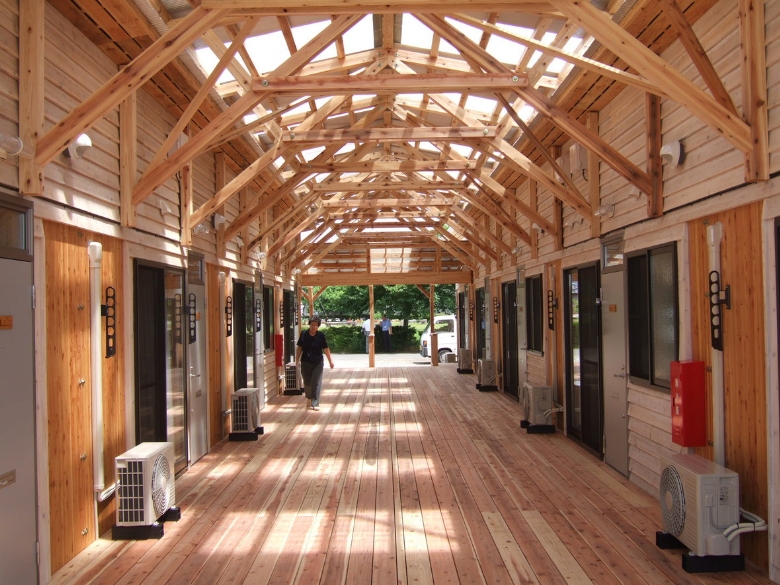Response
Faculty Column: Community Care-Oriented Temporary Housing
Jun Goto
Research Fellow, Institute of Gerontology

Kibonosato Kizuna temporary housing complex in Tono City.
Housing and Caring for the Elderly in Afflicted Areas
The University of Tokyo’s Institute of Gerontology is a cross-disciplinary organization that was established to solve wide-ranging and complex issues arising in the super-aging society through coordinated efforts by professionals in the fields of medicine, nursing, science, engineering, law, economics, sociology, psychology, ethics, and education.
When it comes to the construction of temporary housing for the victims of the Great East Japan Earthquake, focus is placed on the quantity and speed of construction. In the case of past disasters, however, a substantial number of people have remained in temporary housing for four or more years. Due to the tremendous damage caused by the tsunami, the victims of the Great East Japan Earthquake now living in temporary housing will perhaps have to stay there for even longer. Despite this reality, the quality of the dwellings is seldom discussed. After the Great Hanshin-Awaji Earthquake, 250 or more people died a solitary death or committed suicide and more than a few elderly victims were forced to live in special nursing homes located in suburbs far from where they had lived most of their lives.
Measures to construct community care-oriented temporary housing
it is important to help victims to continue to live independently in their local communities
Past studies have shown that it is important to help victims to continue to live independently in their local communities. The Institute of Gerontology’s disaster support team proposed constructing community care-oriented temporary housing complexes featuring units with a barrier-free wooden deck design laid out in rows so that their external doors face out onto each other. It further proposed the establishment of a support center (to be run by the Ministry of Health, Labour and Welfare) and a meeting place (to be run by the Ministry of Land, Infrastructure, Transport and Tourism) within the complex to provide comfortable living environments not only for the elderly but also for people with disabilities and those raising children. At present, we are promoting the construction of such housing complexes in cooperation with Kamaishi City, Otsuchi Town, and Tono City in Iwate Prefecture with the support of Iwate Prefecture’s department in charge of coastal area development and Iwate Prefectural University’s Faculty of Social Welfare. In Kamaishi City, a community care-oriented temporary housing complex composed of housing units, a support center, a supermarket and other stores, a clinic and so on has been constructed in the public park in the Hirata mountain area located six kilometers away from the downtown area.
Most of the town of Otsuchi was devastated by the disaster and it is difficult to secure large tracts of land for temporary housing. As a result, a small number of temporary dwellings were constructed randomly along the river. We are working to improve the temporary houses already built in the afflicted areas and create ties among those who live in them. In Tono City, which was not damaged by the disaster because it is located inland, a temporary housing complex for victims of the disaster named “Kibonosato Kizuna [Village of Shared Hope]” was built as part of the support measures implemented by the city, which is located adjacent to the affected areas.



